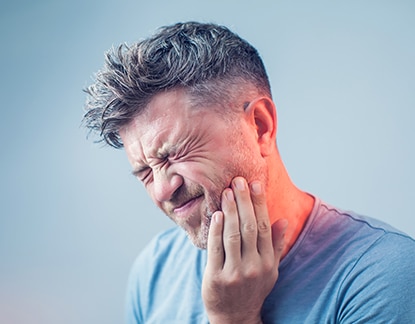Severe pain following a tooth extraction is often enough for your dentist or oral surgeon to suspect dry socket. They will also ask about any other symptoms and examine your mouth to see if you have a blood clot in your tooth socket and whether you have exposed bone.
Overview
Dry socket is a painful dental condition that sometimes happens after you have a permanent adult tooth extracted. Dry socket is when the blood clot at the site of the tooth extraction fails to develop, or it dislodges or dissolves before the wound has healed.
Normally, a blood clot forms at the site of a tooth extraction. This blood clot serves as a protective layer over the underlying bone and nerve endings in the empty tooth socket. The clot also provides the foundation for the growth of new bone and for the development of soft tissue over the clot. Exposure of the underlying bone and nerves results in intense pain, not only in the socket but also along the nerves radiating to the side of your face. The socket becomes inflamed and may fill with food debris, adding to the pain. If you develop dry socket, the pain usually begins one to three days after your tooth is removed.
Dry socket is the most common complication following tooth extractions, such as the removal of third molars (wisdom teeth). Over-the-counter medications alone won’t be enough to treat dry socket pain. Your dentist or oral surgeon can offer treatments to relieve your pain.
Treatment
Treatment of dry socket focuses on reducing symptoms and pain:
- Flushing out the socket: Flushing out the socket can remove any food particles or other debris that may contribute to pain or possible infection.
- Medicated dressings: Your dentist or oral surgeon may pack the socket with medicated gel or paste and medicated dressings. These can provide relatively fast pain relief. The severity of your pain and other symptoms will determine whether you need dressing changes and how often or if you need other treatment.
- Pain medication: Ask which pain medication is best for your situation. You’ll likely need prescription pain medication.
- Self-care: Once the dressing is removed, you may need to flush the socket at home to promote healing and eliminate debris. Typically you’ll receive instructions and a plastic syringe with a curved tip to squirt water, saltwater, or a prescription rinse into the socket. You’ll likely need to continue the rinse until the socket no longer collects any debris.
How to prevent dry socket:
Every case of dry socket is different. Only your dentist or oral surgeon can tell you your personal risk factors for dry socket. To prevent dry socket, it’s very important that you follow your dentist’s instructions for recovery.
After a tooth extraction:
- Don’t smoke for at least 1 week after surgery.
- Don’t drink hot or acidic beverages that may dissolve the blood clot, such as coffee, soda, or juice.
- Avoid injury to the mouth during recovery.
- Avoid consuming food that may get stuck in the site, such as nuts, seeds, or gum.
- Don’t suck on a straw or spoon for 1 week after surgery.
- Avoid birth control pills if you can. Talk with your doctor and plan ahead to find a replacement birth control while you recover.
After extraction, the area should be kept as clean as possible with gentle rinsing. It is important to follow any special instructions given by the dentist or surgeon in caring for the extraction site at home. Contact us today at Verber Family Dentistry for any questions you may have on dry sockets.





